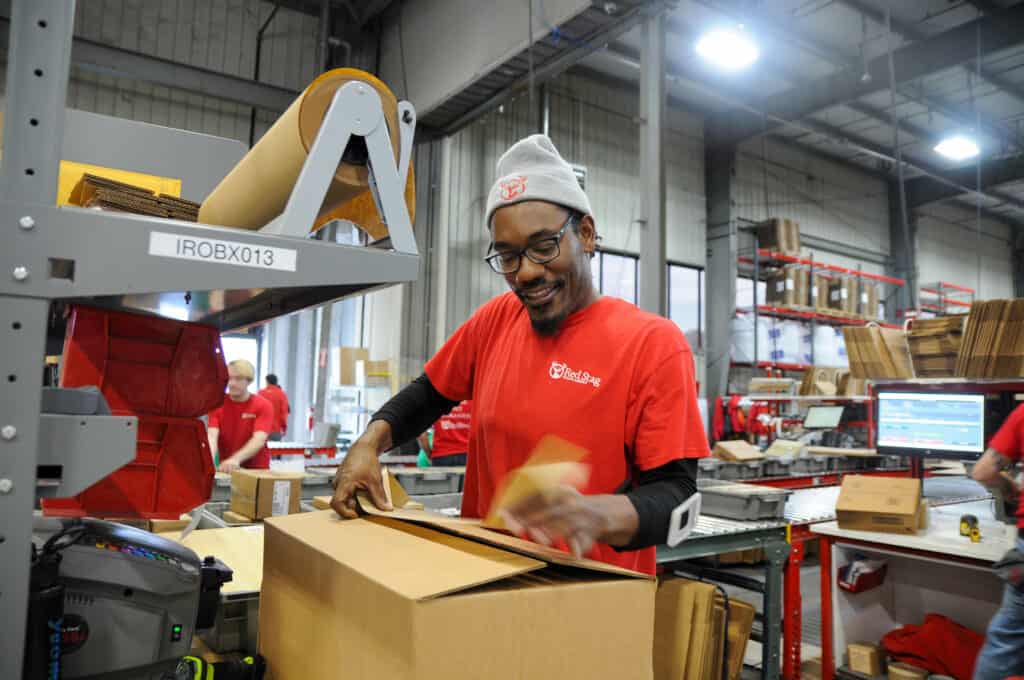This story originally appeared on Best Stocks
Table of Contents
Ford stock (F)
Analyst Dan Levy raised Ford outperform on Wednesday, saying the company was on track for a reinvention as a future car company.
“When we downgraded Ford early last year, our concern was that Ford was struggling to balance the ‘two clocks’ – near-term execution issues would eventually limit Ford’s ability to adequately prepare for the auto industry’s long-term transition,” the note said. “Yet, in the last year or so, we’ve seen a significant turnaround underway at Ford – it has ended its cycle of quarterly earnings disappointments, and its transition to an EV/digital world has accelerated dramatically.”
This year has seen traditional automakers announce new investments and initiatives for electric and self-driving vehicles. Ford has already been a top performer on Wall Street this year, with its stock up 75%.
Despite the rebound, Credit Suisse believes The Ford stock forecast shows room to grow as its new vehicles roll off the assembly line.
“We see opportunity in the ‘far,’ with the potential to improve perception on Ford’s long-term positioning in EV and AV.” “The launch of the F-150 Lightning next spring could be a catalyst “.
Procter & Gamble (PG)

Don’t be fooled: price increases can only go so far in covering inflation. Some thoughts from the company:
In the third quarter, gross margin fell 3.7 percentage points year on year.
Commodity cost inflation accounted for nearly all of the gross margin decline (3.5 percentage points)
Transportation costs increased by 0.5 percentage point, reducing margins by another 0.5 percentage point.
Price increases increased gross margin by 0.5 percentage points.
As evidenced by the preceding points, price increases only covered the increase in freight costs, whereas commodity costs were a significant blow to P&G’s margins. To cushion its margins, the company had to rely on some “productivity savings,” but that wasn’t nearly enough to compensate for all of the commodity cost pressures.
P&G shares were down about 1.6 percent on Tuesday, bringing the company’s year-to-date performance to a halt.
Rising costs obviate the opportunity to increase the Procter & Gamble stock forecast.
In addition, the company raised its fiscal year forecast for commodity and freight inflation. After completing its first quarter, it now anticipates a $2.3 billion headwind for the year. This is a 21% increase from the $1.9 billion headwind forecasted three months ago.
Overall, commodity and freight cost inflation will reduce earnings per share by 90 cents per share for the full year. Full-year earnings would be about 15% higher than the company’s current EPS forecast if it weren’t for the huge inflation issues.
Finally, despite the increased headwinds, P&G’s financial guidance isn’t bad. Its revenue and organic sales forecasts remain unchanged. However, despite the increased inflationary pressures, it is maintaining its EPS forecast.
While higher prices are unavoidable, they do not appear to be strong enough to cause the company to revise its sales forecast. At the same time, demand appears to be stable, as the organic sales outlook has not changed.
So, how does the earnings outlook fare in these circumstances? P&G may rely heavily on operational efficiencies to maintain profit levels in this inflationary environment.
Best European stocks

“We expect another beat for 3Q results, albeit at a lower level than in previous quarters,” Morgan Stanley’s Europe analysts, led by Ross A MacDonald, wrote in a research note published on Oct. 14.
They highlighted a number of stocks in sectors such as apparel, banking, and services that the bank’s research analysts are bullish on ahead of the results. Hugo Boss is a pick for its estimated 34 percent year-over-year sales growth for the quarter, according to Morgan Stanley, at the top end of the company’s guidance.
The bank also likes hotel operator Whitbread, expecting it to have the “strongest” revenue per available room (known as RevPAR, a key metric in hospitality) of the companies it covers. “Whitbread is our top pick in Travel & Leisure,” the analysts continued.
Elis, a laundry services company, is expected to benefit from a “stronger than expected Hospitality recovery in 3Q,” according to analysts. “Eis is expected to grow by at least double digits, even in a conservative Hospitality recovery.”
Morgan Stanley’s financial pick is Societe Generale, a French bank whose revenues are expected to “surprise positively.” The other is Italian bank UniCredit, whose fees are expected to rise “significantly,” according to analysts.
Morgan Stanley expects steel company Acerinox to “deliver the biggest sequential earnings step up in the stainless sector,” and it also expects buybacks, in which the company buys back shares from investors.
Picks from Barclays
Barclays Europe analysts stated in an Oct. 13 research note that they expect firm demand to protect company margins from issues such as supply chain disruptions. “The end of the ‘over-earning’ period of the previous year will almost certainly result in lower equity returns in the future.” “However, if demand holds up and supply bottlenecks ease, ’22 could still be a good year for earnings,” they said.
“Q3 results will be a reality check for nervous, but still high, equity markets,” Barclays analysts warned while screening for stocks that outperformed despite “poor relative EPS revisions and relatively high valuations.” Earnings per share (EPS) is a key indicator of a company’s performance. Barclays’ picks span industries such as retail, utilities, and financial services.
In the utilities sector, the bank chose United Utilities Group, SSE, and EDP Energias De Portugal, and stated that third-quarter results are “positive” due to European power prices “reaching new all-time highs.”
Barclays chose Dutch bank ING Group and Belgian holding company Groupe Bruxelles Lambert in the financial sector. “The continued rise in equity markets in Q3 is expected to be largely supportive for many of the diverse financial subsectors,” the analysts wrote.
According to the analysts, retail will have a strong quarter, and stocks on their radar include Zara owner Inditex, meal company HelloFresh, and fashion retailers Next and JD Sports.
Barclays analysts highlighted semiconductor companies Infineon and STMicro as likely beneficiaries of price increases when describing their views on different sectors’ earnings. “Amongst the pharma SMIDS [small and mid-sized companies], we expect a broadly solid earnings season with some potential for beats and raises from the likes of Hikma, Ipsen, and Merck,” it said.
Stock selection at UBS
According to UBS analysts led by Guillermo Peigneux Lojo in an Oct. 13 research note, Europe’s capital goods companies (which manufacture machinery, vehicles, and equipment) are set to outperform the broader market this earnings season.
Energy management company Schneider Electric is among the bank’s buy-rated picks in the sector, and the bank believes it “will continue to benefit from strong growth rates.” It also likes Siemens, which it believes will benefit from “strong end market trends and continued improvement in execution.”
UBS also likes plant supplier Andritz, food systems supplier GEA, German packaging company Krones “on likely resilient Q3 numbers,” and braking systems manufacturer Knorr-Bremse for likely outperformance in its truck division.
These ESG stocks have attractive prices

Patrick Palfrey, co-head of quantitative research at Credit Suisse, that predicted earlier this year the great GEVO stock forecast, scoured the S&P500 for companies with the highest ESG ratings in comparison to their peers. ESG is an acronym that stands for investing based on environmental, social, and governance criteria.
Investors, according to Palfrey, should be cautious about how they select companies for ESG traits, and some investors make the mistake of assuming that companies with high ratings for sustainability are automatically good investments.
“There is some overlap.” If everything else is equal, you’re more likely to choose a high-quality company if you choose an ESG company. To say they can be used interchangeably is an oversimplification, according to Palfrey. “Historically, companies with high ESG scores have grown slower, but they have also been valued higher.”
Stocks of companies with a high ESG score are valued higher than those with a low score. However, their revenues are expected to grow slightly slower, by 0.6 percent, than lower-rated companies, according to Palfrey. For the companies he screened, he used MSCI ratings.
Palfrey discovered that the stocks that were rated higher than their peers overall for ESG characteristics did not rank in the top third for each of the environmental, social, and governance categories.
For example, CBRE, a real estate investment trust, ranked third among its peers in the S&P500 based on its ESG rating. The stock was in the bottom third for environmental performance but in the top third for social and governance performance.
CBRE was one of eight stocks found by Palfrey that were in the top third of ESG as well as the top third of REITs in terms of 12-month forward price-earnings and sales growth. Palfrey’s list of 31 companies that met those criteria also included Alaska Air, Colgate Palmolive, and Robert Half.
The companies’ ESG ratings also differed. T. Rowe Price, for example, was in the top third of financials for ESG, but it was neutral, or in the middle third, on environment while in the upper third on social and governance. Based on its forward price-to-earnings ratio, it was also in the middle third.
Halliburton and Oneok were in the top third of energy companies in terms of ESG ratings, but in the middle third in terms of social and governance criteria.
According to Credit Suisse, Halliburton was in the middle third of energy companies in terms of both sales growth and forward price-earnings, while Oneok was at the top for sales growth but in the bottom third for price-earnings.















